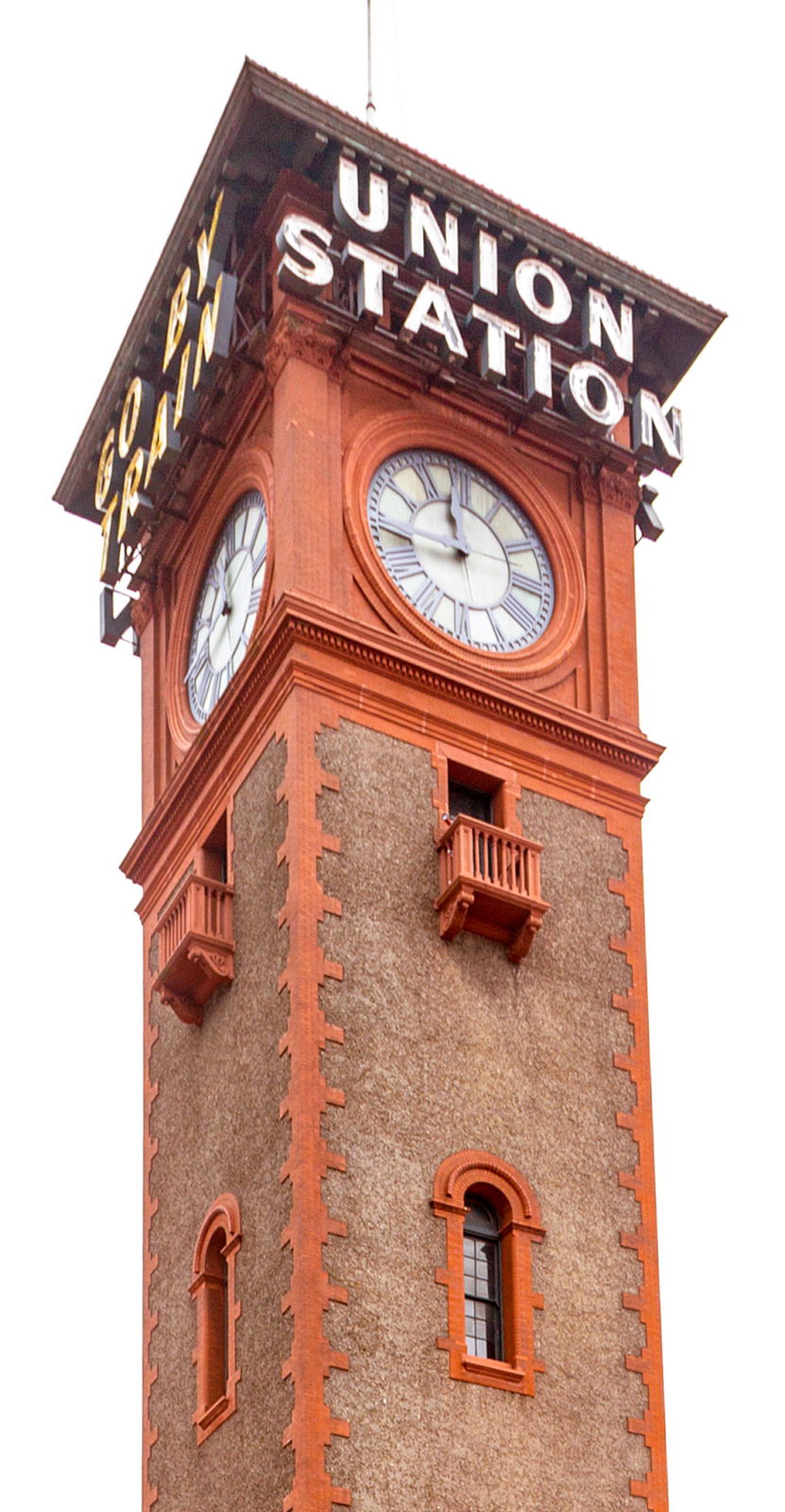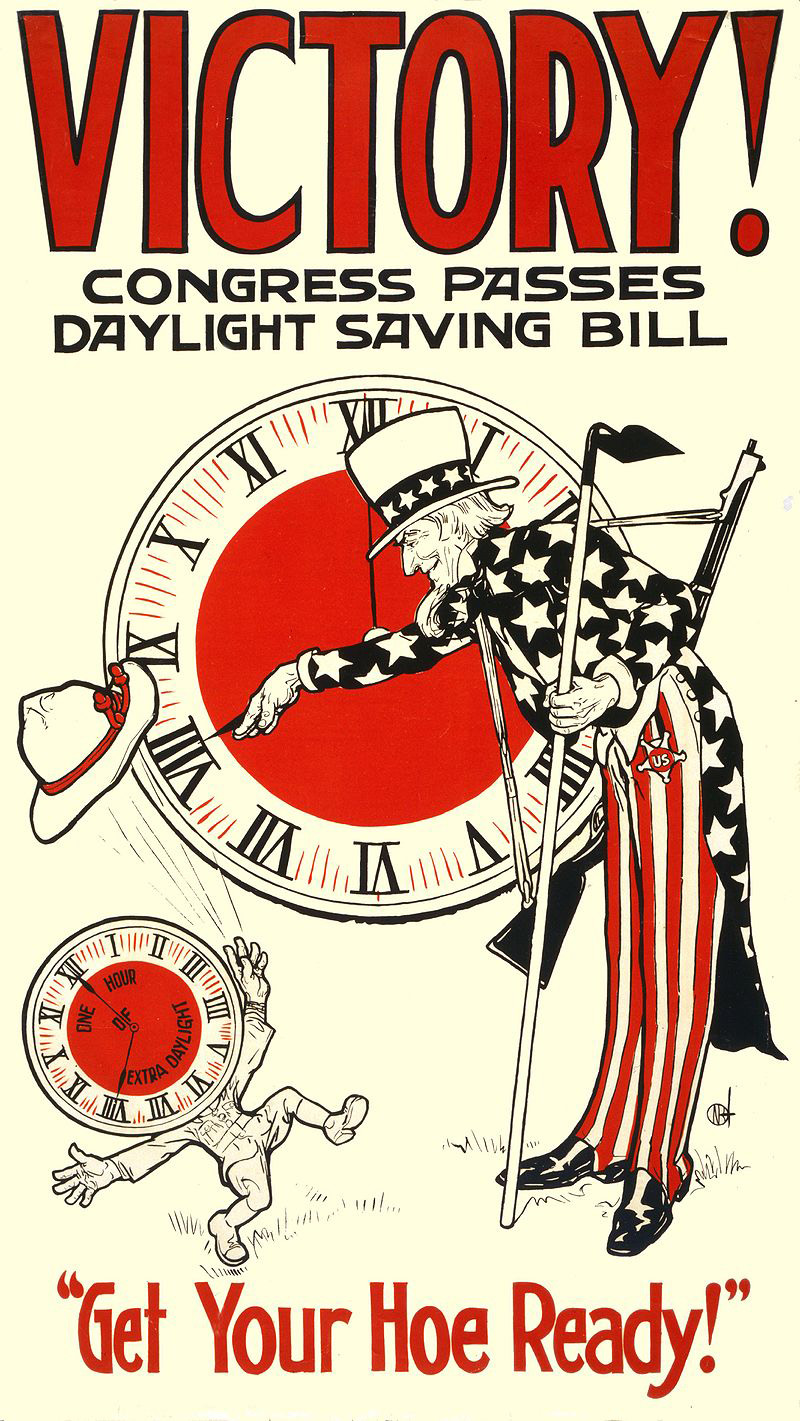Standard Time
Today, clocks, railways ... and individualism. The University of Houston presents this series about the machines that make our civilization run and the people whose ingenuity created them.
Have you ever wondered how -- when the wagons went west -- settlers set their watches after they got to, say, Dry Well, Nevada? No TV or radios. So how did their watches compare when they met their neighbors from Broken Axle, Utah?
Watches in Dry Well simply did not match the ones in Broken Axle. For that matter, neither did the clocks in Philadelphia match the ones in New Haven. But, something had to be done about time when we started building railroads in the 1830s. Outside the station, trains ran both ways on a single track. Northbound trains had to know when to expect southbound trains.
 So the railroads became law unto themselves, as far as time was concerned. At first, railroad personnel agreed on time as best they could. But they needed something better. And the new telegraph systems were the answer. A director of the Harvard Observatory finally developed a system for telegraphing time to the railroads. But that, in turn, raised another question:
So the railroads became law unto themselves, as far as time was concerned. At first, railroad personnel agreed on time as best they could. But they needed something better. And the new telegraph systems were the answer. A director of the Harvard Observatory finally developed a system for telegraphing time to the railroads. But that, in turn, raised another question:
"Whose time should be given out?" Sailors, the world over, agreed on Greenwich Meridian time. But American nationalism didn't permit that. Instead, the railroads adopted a set of time standards -- each one tied to a different city. And those standards became the public standard. So that's how we finally reached a kind of time-tower-of-Babel -- 1879 found us setting our clocks by 75 different railroad standard times. Objective voices begged for a uniform standard.
 The railroads finally agreed to standardize on common time zones, six years later. That March, they each adjusted their clocks by a few minutes--- to fit into one of four time zones. And yet: Clocks around them did not change. The railroads were so powerful that the public deeply distrusted them. We wouldn't buy into the railroad standard until 1918.
The railroads finally agreed to standardize on common time zones, six years later. That March, they each adjusted their clocks by a few minutes--- to fit into one of four time zones. And yet: Clocks around them did not change. The railroads were so powerful that the public deeply distrusted them. We wouldn't buy into the railroad standard until 1918.
Even after that, the time-independence of the railroads lingered. But that was also when we first tried Daylight Savings Time. That was on and off in America. But it finally gained traction during WW-II, and it became the law of the land in 1967. Only then did the railroads finally give in, and build it into their schedules. Up 'til then, they'd ignored Daylight Savings Time whenever it was in place.
So all the tools for setting up time-standards had been in place since 1850. But, back then, Sacramento and Hartford might as well have been on different planets. We still felt little need for a standard. After all, individualism is too precious to give up just because technology says that it's the sensible thing to do.
So we reject any standard that treads on our individualism. I suppose it makes sense that we'll suffer vast inconvenience before the needs of our common good become painfully obvious.
I'm John Lienhard at the University of Houston, where we're interested in the way inventive minds work.
C. Stephens, "The Most Reliable Time": William Bond, the New England Railroads, and Time Awareness in 19th-Century America. Technology and Culture, Vol. 30, No. 1, 1989, pp. 1-24.
I. R. Bartky, The Adoption of Standard Time. Technology and Culture, Vol. 30, No. 1, 1989, pp. 25-56.
See also the Wikipedia pages on Standard Time, Railway Time, and Daylight Savings Time.
Portland Railroad Depot clock photo by John Lienhard. Daylight Savings Time poster courtesy of Wikimedia.
This is a revised version of Episode 272.
This episode was first aired on November 7, 2021